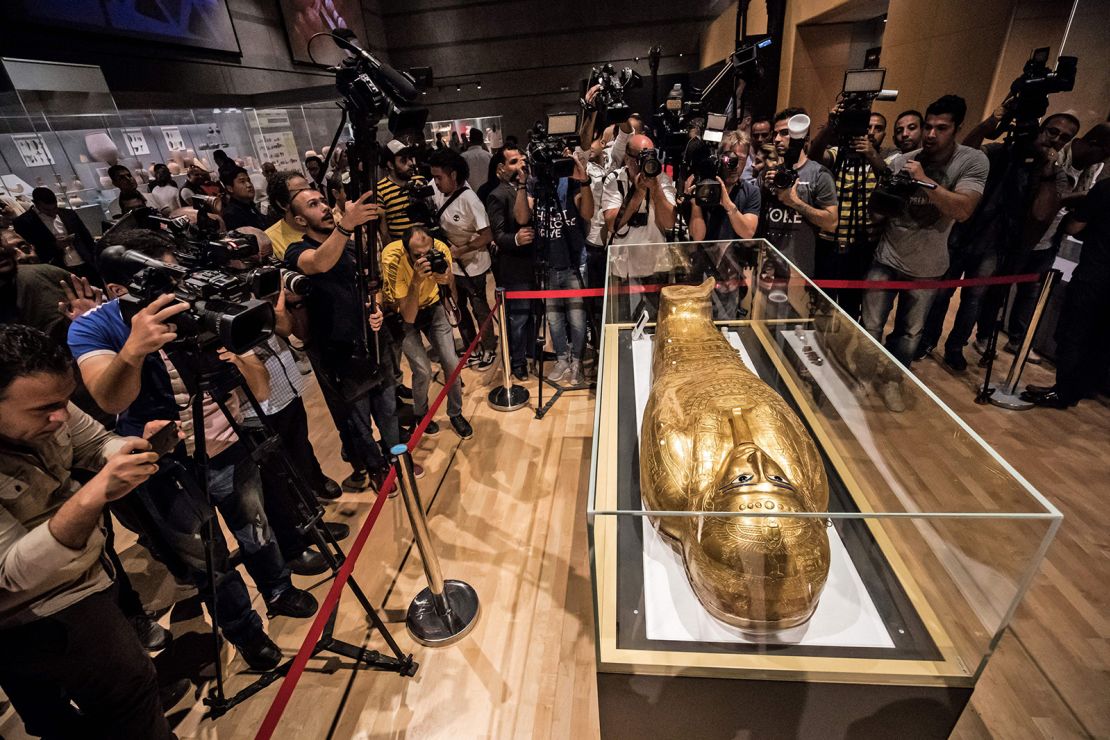Verifying the provenance of antiquities has always been a tricky business.
The New York Met discovered this when, in 2019, it announced it was returning an Egyptian coffin purchased from an art dealer after learning it had been looted from Egypt during the unrest of 2011.
Now, some are suggesting blockchain could spare the blushes of those trading in ancient treasures and artifacts.
A real time artifact ledger
In a promising advance for the fight to prevent the looting of relics, researchers at the University of Abu Dhabi and University College London (UCL) have developed a blockchain tool called Salsal (also known as Agur).
Blockchain, the technology that underpins cryptocurrencies like Bitcoin, is essentially a decentralized, immutable, publicly accessible digital ledger. Data is recorded across many computers to form a database of linked blocks.
Once information is recorded on the blockchain, it cannot be altered retroactively without the alteration of all blocks in the chain and the consensus of the network.
Salsal allows a museum or collector to submit details about their collection using the web platform. Multiple experts then assess whether the collection was legally and ethically obtained while also ruling on its authenticity.
Adel Khelifi, professor of computer science at the University of Abu Dhabi, and Mark Altaweel, professor at UCL’s institute of archaeology, led the project and say it provides a secure, transparent, and reliable way to track authenticity and ownership.
“If you’re a collector, like a museum, you can upload images and descriptions about those objects, then it goes to the verifiers who check the objects are valid,” explains Altaweel.
“We use the Museums Association certification process where you rate objects on a one to five scale (based on) how secure or how valid a collection is.”
“The idea was that this also becomes a way to pressure those collectors – including museums – to really make sure that the items they are displaying to the public are legal,” adds Altaweel. “If they have an object there illegally or obtained in an unethical manner, then they should do something about it.”
If a collection is verified, the owner can convert it into an NFT that serves as a certificate of authentication, as well as allowing the secure transfer of ownership and enabling tracking of a collection’s movement over time.
This feature establishes a transparent history, thereby deterring potential looters and encouraging the return of stolen artifacts to their countries of origin.
It also makes artifacts of cultural importance accessible through the database to those who can’t view the collection in person.
“I see it as a way for cultural institutions to begin to share information about (their collections) to the public - so the public can also be involved in protecting them effectively or sharing knowledge about them,” says Altaweel.

Cultural justice
“As a refugee I have chosen the language of cultural heritage to fight for justice bringing looted art back home”, says Tasoula Hadjitofi, author of The Icon Hunter, who was forced to flee her home in Famagusta, Cyprus, in 1974 after the Turkish invasion.
Hadjitofi is also CEO of Walk of Truth – a non-profit based in the Netherlands that is dedicated to protecting important artifacts and combating the looting of antiquities.
“My inability to work out my inner conflicts as a child of war, led me to channel it in another way and that was to hunt and track down looted artifacts from Cyprus and bring them back home to my people to give them back something of what they lost,” she explains.
Hadjitofi has lobbied British and Dutch MPs to change laws and ratify The Hague Treaty of 1954 to protect cultural heritage in case of war and armed conflict.
“This journey has been difficult, dangerous and led me through the corridors of political and religious powers, underworlds of gangsters and thugs, whilst working next to the best of the law enforcement and legal brains in the world,” she says.
Hadjitofi believes that tools like Salsal could help to bring awareness of the role of dealers, museums, and collectors and highlight the ethics around individuals privately owning artifacts and relics.
Hadjitofi says that in the field of provenance research, the history of objects is often opaque and this can be exploited by criminals who illegally move artifacts around. She is hopeful Salsal will put pressure on organizations and individuals who hold antiquities to register their journey, “from original place to the museum, auction house or collector’s home.”
According to Hadjitofi, objects with questionable provenance often become legitimized thanks to weak legislation, allowing them to be traded among private collectors who experience no public pressure to return these antiquities to their rightful owners.
“Technology can help activists, volunteers, and researchers shed light and combat art trafficking,” says Hadjitofi. She also hopes Salsal will create “armies of students” to “hunt” for illegally acquired antiquities and appeal to “the conscience of collectors” to share information about their collections and return any items that are found to have been stolen.
People power
Another blockchain based tool, called Kapu, was developed in Italy in 2017, but the tool has since gone offline.
Despite the significant progress made with blockchain technology, challenges remain. Altaweel and Khelifi say the key to Salsal’s success will be convincing people to use it. “We’re now in the phase of trying to get (Salsal) into people’s hands,” says Altaweel.
There is a small cost for collectors to use Salsal, but no more than a couple of dollars per collection. This associated cost should not be prohibitive. Both him and Khelifi hope that the tool will be used widely enough that in time collections that are not verified will come under suspicion.
Eventually, Altaweel hopes it will reach the point that “If you don’t have verification status of your items, people begin to question why.”







